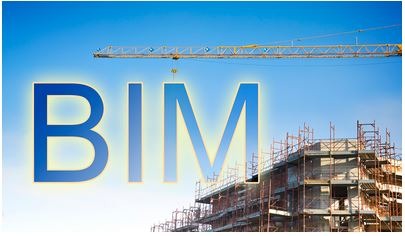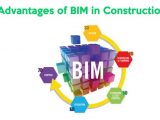
The Benefits Of Incorporating BIM For The Construction Process
23 December 2019Table of Contents
The Benefits Of Incorporating BIM For The Construction Process
Building information modeling, popularly known as “BIM”, is the present star player in the construction industry. Though it has been almost a decade since the technology has been around, but in last two years it has created a lot of buzz in the industry. So what really is BIM? Here is the US National Building Information Model Standard Project Committee’s definition for better understanding:
“Building Information Modeling (BIM) is a digital representation of physical and functional characteristics of a facility. A BIM is a shared knowledge resource for information about a facility forming a reliable basis for decisions during its life-cycle; defined as existing from earliest conception to demolition (NBIMS-US, 2016).”
Use of BIM services in construction will help in generating visual files with all variables that are required in the construction of the actual project. All you need to do is provide the correct input and the output will be a model that will have all the information which is needed by anyone working on the project to make it a success.
The benefits of incorporating BIM in the construction process are many, but can be summarized in following five individual points:
Extended Scope
Conventionally, building model of a construction project is focused on the visualization of the building or infrastructure to be built. Though this type of CAD model could be used as a guideline for proceeding further, but not for exact calculation of variables involved. However, BIM not only includes these variables, but highlights them too. For example, thermal modeling is also as much a part of BIM as natural light and HVAC system. A shift from traditional architectural drawing to BIM will is like expanding the scope of the model, which, in turn, will increase the reliability of the model.
Projecting Constructability and Price
The enhanced scope of BIM will further help the construction managers and stakeholders in better understanding what exactly is involved in building the final project. Further, the traditional CAD models usually do not provide accurate pricing projections, but BIM includes all the variables to predict both individual and overall construction prices.
Enhanced Stakeholder Coordination
The most difficult part of completing a construction project is to maintain coordination of all the stakeholders. BIM services can lead to a better coordinated collaboration of all the stakeholders, as it includes a wide range of variables related to construction.
Accounting of Complex Construction Processes
The modern construction process is very complex, resulting in lack of a coordinated extended timeline and money loss. BIM provides a more cost and time-sensitive solution: In BIM data is directly connected with design, therefore, any design updates will update the model, thus accounting for each variable in the construction process.
Building workflow reliability
Planning a construction project can be a daunting task because of a large number of overlapping timelines. One major benefit of using BIM service is that it helps in avoiding clashes in areas where one model overlaps or makes the other impossible. BIM makes finding these clashes easier. In fact, it allows managers to spot problems before they become they go out of hand, thus building a more reliable workflow.
These benefits of incorporating BIM in the construction process has made it an invaluable tool for the construction industry. Any project starting with BIM will definitely have a greater chance of success.








